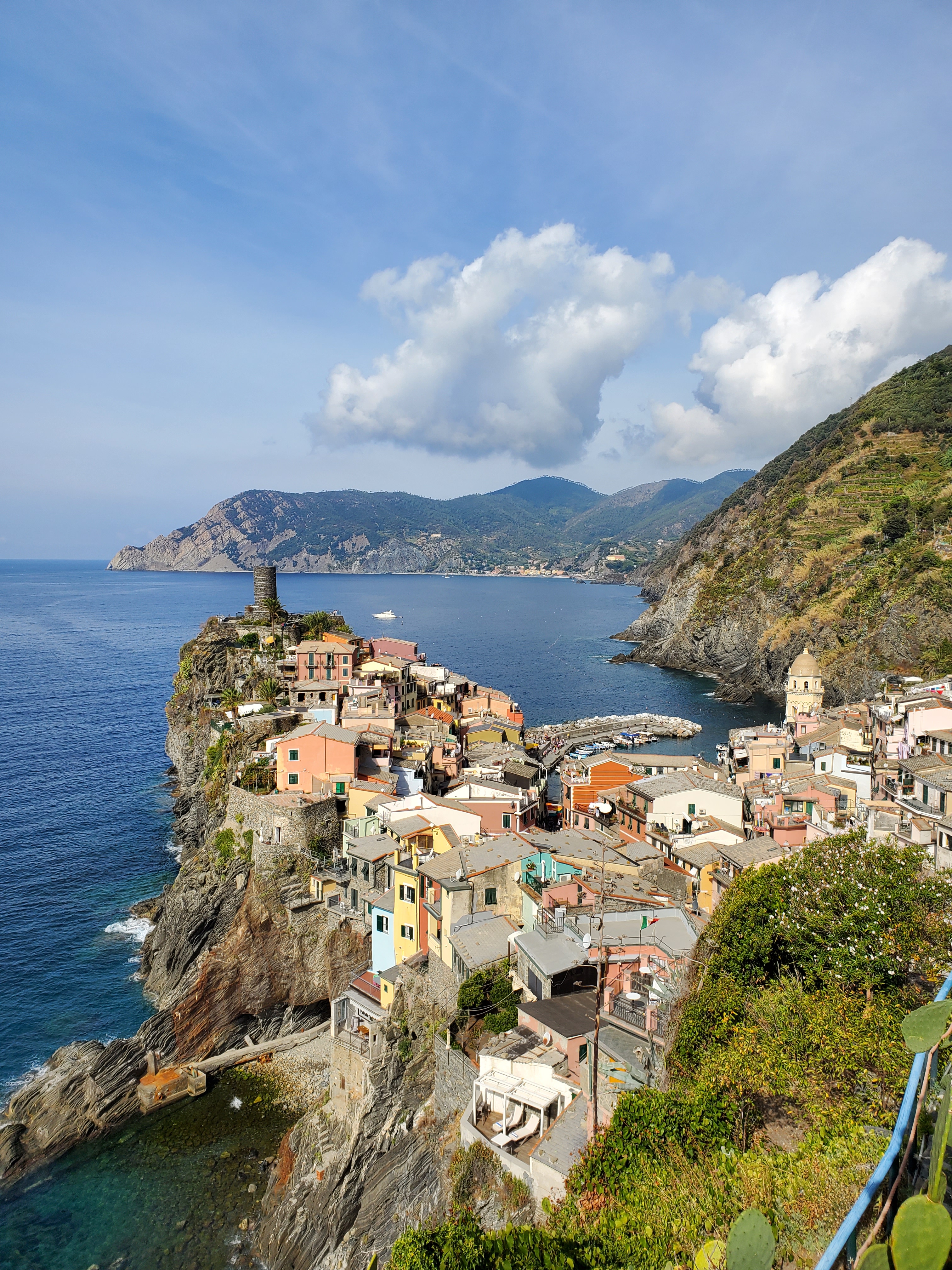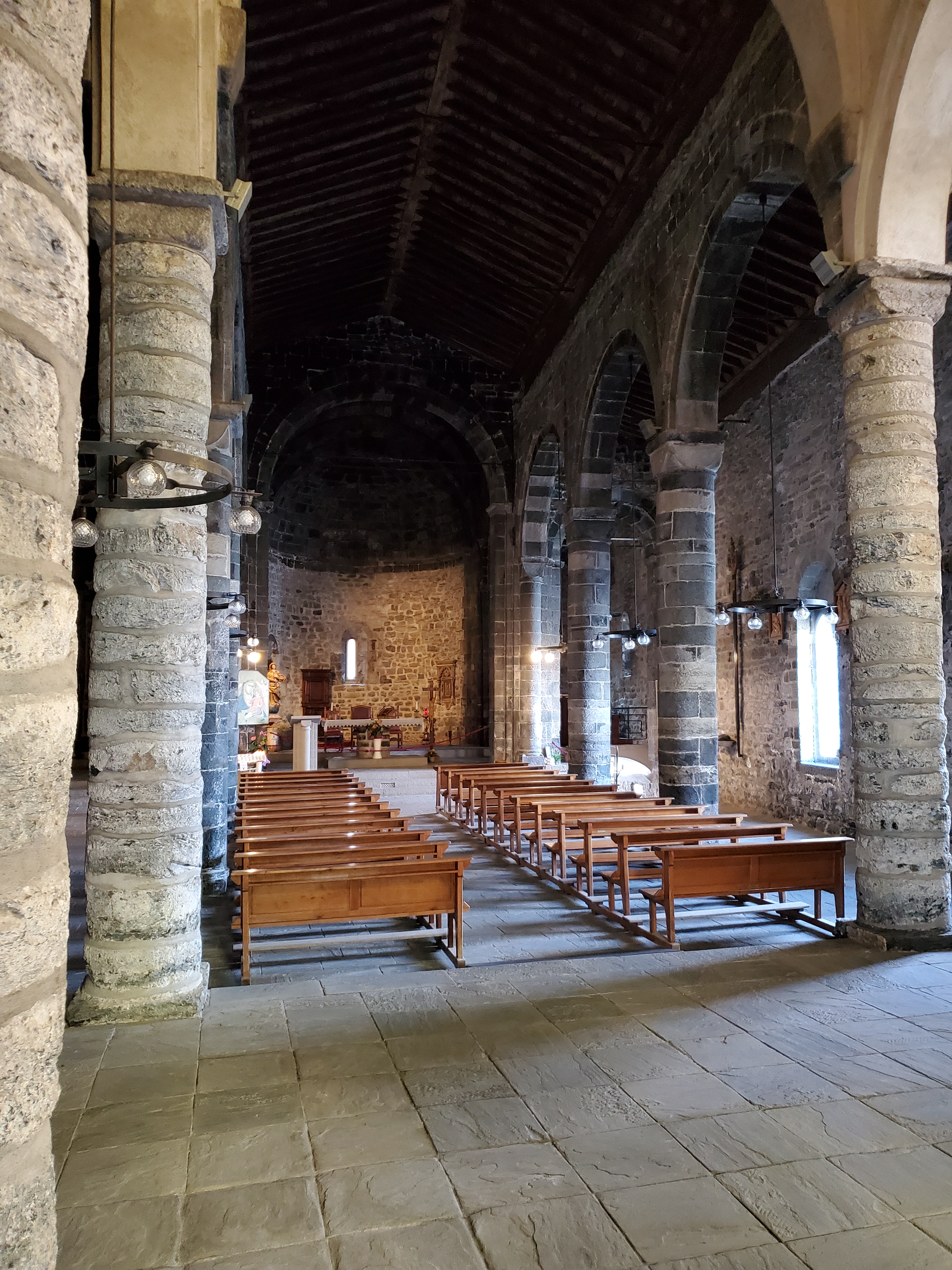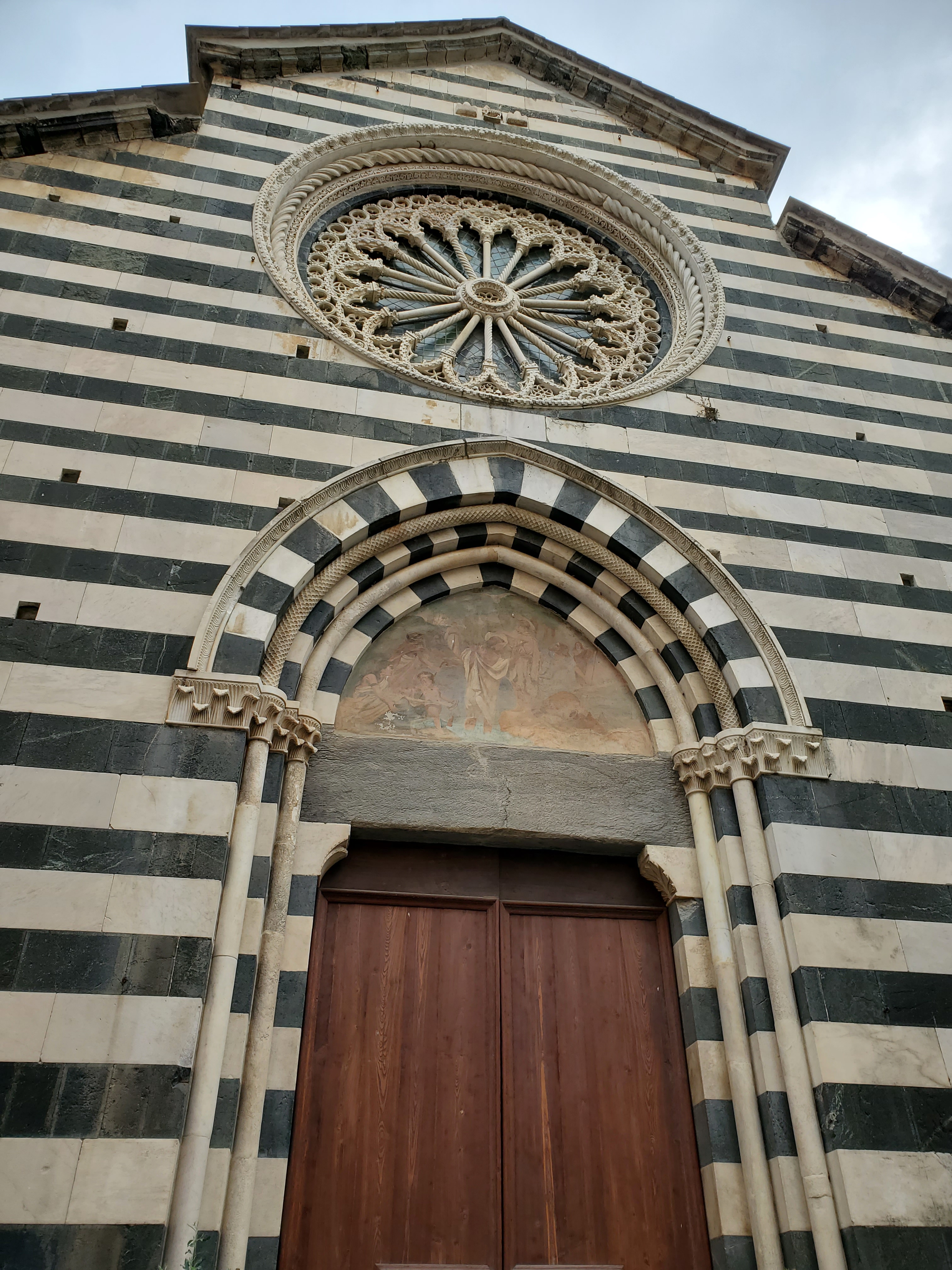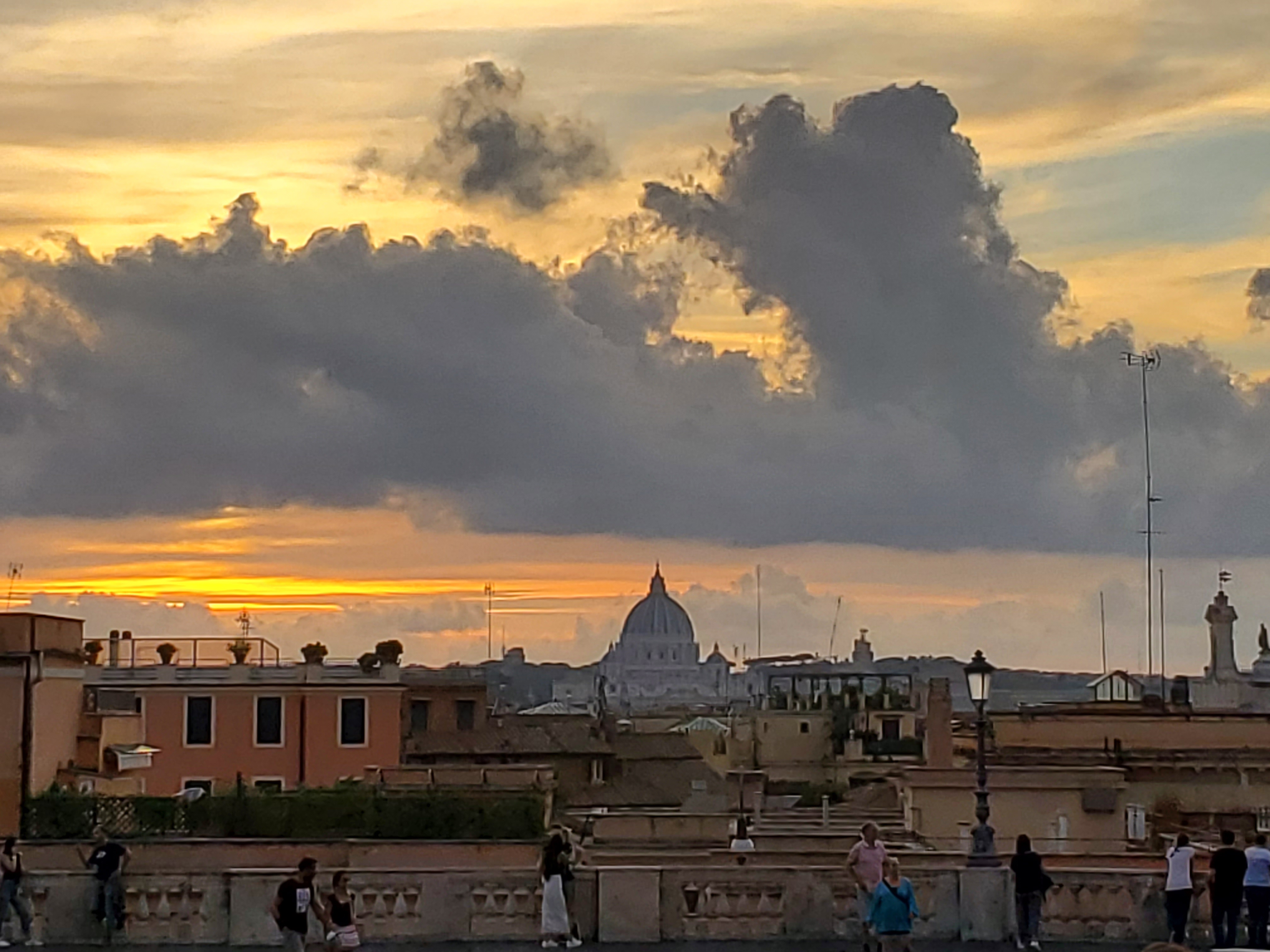
Sorry, I forgot to include the mosaic on the facade of the Basilica of San Frediano in Lucca.

Also the exterior of the duomo.

And the facade of the basilica of San Michele. The church holds the tomb of St. Davino the Armenian.

And this painting of Saints Rocco, Sebastian, Jerome, and Helen by Filippino Lippi.

—

I also had the chance to visit three of the five towns that make up the Cinque Terre, on the Ligurian coast. They each have a millennium-old church.









Also, I got to visit Rome and the major basilicas there.



I happened upon the Rome marathon and tried to encourage the runners with shouts of “Bravi!”

I did not stay at this particular hotel on the Via Cavour:

—

I spent a long time standing in front of St. Peter’s, thinking about all that the place has meant to me, over the decades. I was here in winter 2001, when McCarrick and Bergoglio became Cardinals. And I was here just days before James Grein spoke to a New York Times reporter about McCarrick abusing him, in summer 2018.
I will have more to say about all that, and about how the city of Florence appears in Shakespeare’s All’s Well that Ends Well, not to mention the role that the Tuscan city-states played during the Western Schism in the thirteenth and fourteenth centuries, and Friar Girolamo Savonarola…

But first let me remind you, dear reader, about the talk by Ms. Becky Ianni in our “I Survived, and I Have a Vision” speakers’ series. She will speak this Saturday, September 25, at 5:00pm, at St. Luke’s Episcopal Church on Fort Hunt Road in Alexandria VA.














































































